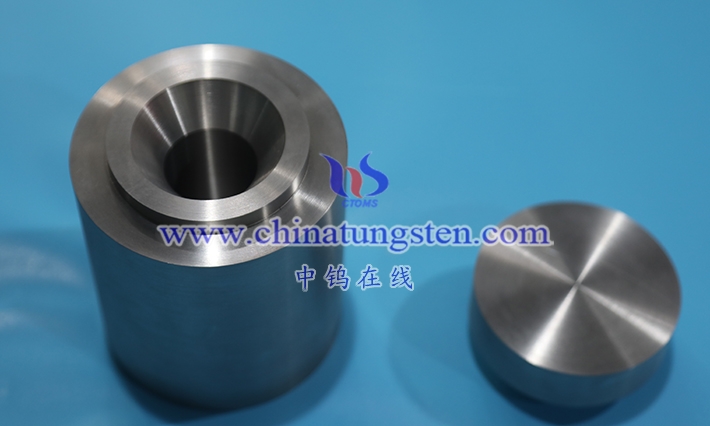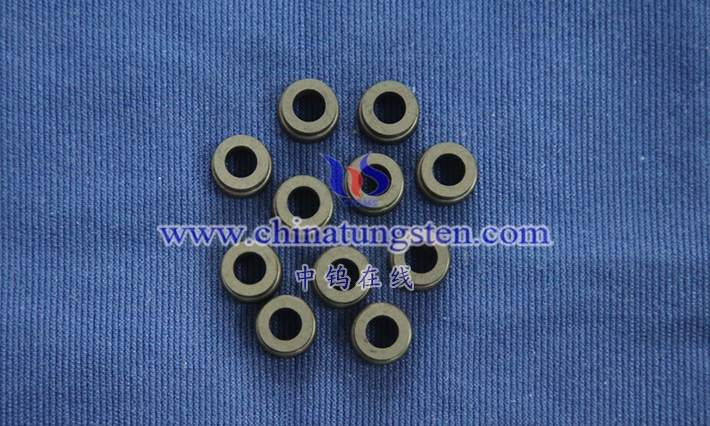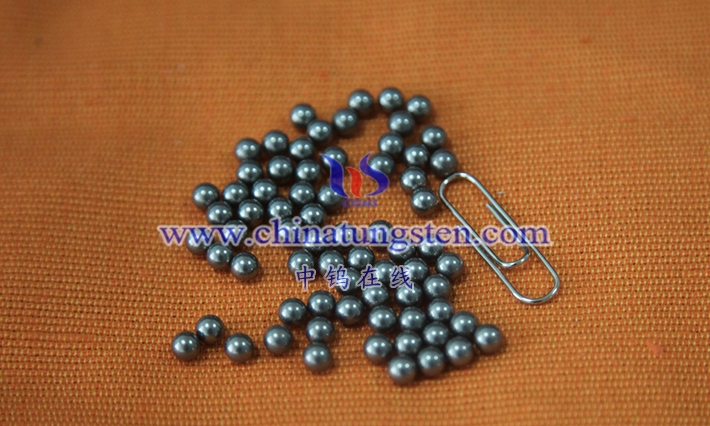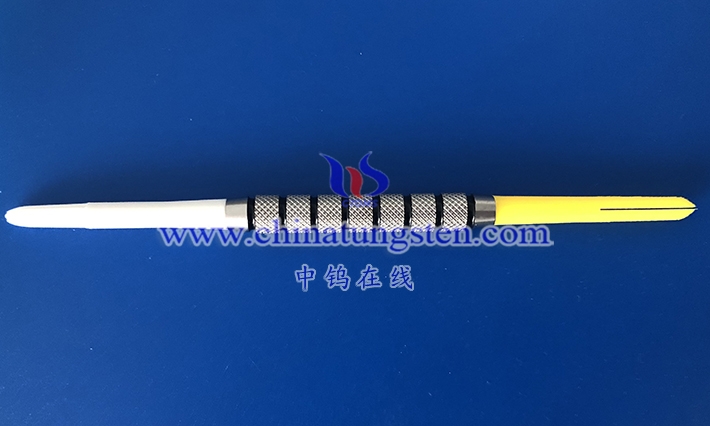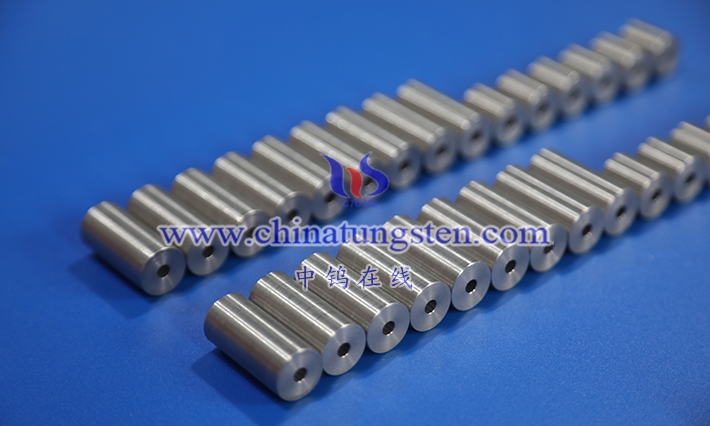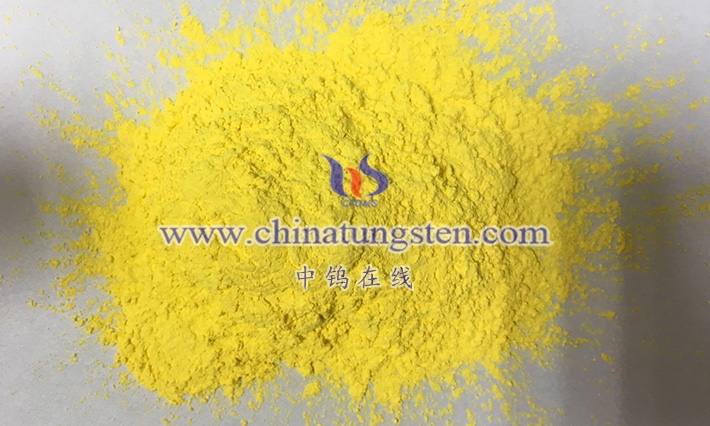
Chapter 1 Introduction
As an important transition metal oxide, tungsten oxide (WO₃) has become a research hotspot in the fields of materials science, chemistry and engineering due to its unique physicochemical properties and wide application potential.
1.1 Study the tungsten oxide background
The research background of tungsten oxide stems from its versatility in the industrial, energy and environmental sectors and the strategic position of tungsten resources in the global economy. Tungsten is known for its high melting point (3422°C), high hardness and chemical stability, and tungsten oxide, as one of the main compounds of tungsten, is not only a key intermediate in the production of tungsten metal and cemented carbide, but also shows great potential in the high-tech field due to its semiconductor properties (band gap 2.6-3.0 eV) and optical properties.
Industrial & Resource Background
Tungsten is an important representative of rare metals, with global reserves of about 3.3 million tons, of which China accounts for more than 60%, and is the largest producer and exporter of tungsten. According to Tungsten News, the global demand for tungsten is expected to reach 100,000 tons per year in 2025, of which tungsten oxide production accounts for an important share. Traditionally, tungsten oxide is used to make tungsten copper, tungsten wire and other products by roasting tungsten powder or extracting wolframite and scheelite. However, with the upgrading of industrial technology, its application has been extended to the fields of new energy, electronic information and environmental protection.
Scientific and technical background
The semiconducting properties of tungsten oxide give it a unique advantage in the fields of photocatalysis, electrochromism, and sensors. It has a moderate band gap and can absorb visible light to generate photogenerated electron-hole pairs, which are used to decompose aquatic hydrogen or degrade pollutants. In addition, its electrochromic properties, which can change from transparent to dark blue, make it an ideal material for smart windows and displays. The rise of nanotechnology has further advanced tungsten oxide research, and through advances in tungsten technology, such as hydrothermal and vapor deposition, synthetic nanoparticles exhibit higher specific surface area and activity.
Environmental & Social Context
With the global emphasis on sustainable development, the application of tungsten oxide in the field of environmental protection has attracted much attention. For example, its photocatalytic properties can be used for wastewater treatment and air purification, while applications in fire-resistant fabrics increase safety. At the same time, the fluctuation of tungsten prices (expected to be US$20-30/kg in 2025) reflects the tight supply and demand of resources, driving the research of efficient and low-cost production processes. In addition, the biomedical applications of tungsten oxide, such as photothermal therapy, also open up new opportunities in the field of health.
The background of the study of tungsten oxide is therefore rooted in its multidisciplinary interdisciplinarity, which is supported by the industrial base, driven by technological innovation, and driven by social needs. This background provides a solid basis for an in-depth study of its properties and applications.
1.2 Research on the purpose and innovation of tungsten oxide
The purpose of the research on tungsten oxide is to systematically explore its performance optimization paths, expand its application fields, and solve the existing technical bottlenecks. This study aims not only to deepen the understanding of crystal structure, morphology and function, but also to improve its efficiency and sustainability in practical applications through innovative means.
Objective: To reveal the relationship between properties and structure: By analyzing the effects of reaction rate and synthesis conditions on the crystal structure of tungsten oxide (such as monoclinic and tetragonal), the regulatory mechanism of its physical and chemical properties was clarified, and the theoretical basis for performance optimization was clarified. Expand application areas: Expand tungsten oxide from traditional industrial uses to new energy (such as batteries, supercapacitors), smart materials (such as electrochromic devices) and biomedical (such as biosensors) to meet the needs of multiple fields. Optimize the production process: develop low-cost, environmentally friendly synthesis methods (such as the green process using ammonium paratungstate) to improve the industrial feasibility of tungsten oxide, reduce energy consumption and waste emissions. Solve the technical bottleneck: In view of its low photocatalytic efficiency and poor cycle stability, improve the scheme is proposed to enhance its competitiveness in practical application.
Innovation: Reaction rate regulates crystal structure: This study systematically explores the influence of reaction rate on tungsten oxide crystal form and defects for the first time, and proposes a strategy for the controlled synthesis of specific crystal forms by using kinetic and thermodynamic analysis. For example, highly reactive cubic crystals are generated by rapid oxidation for photocatalysis; Slow-speed synthesis of monoclinic crystals for devices with high stability requirements.
Multifunctional composite materials: Innovatively composite tungsten oxide with tungsten plastic, tungsten copper, etc., to develop flexible and highly conductive new materials, suitable for wearable electronics and fireproof fabrics. Nanotechnology integration: Tungsten oxide nano is prepared from tungsten particles to optimize its specific surface area (>200 m²/g) and photothermal conversion efficiency (>50%), breaking through the performance limits of traditional materials.
Green production path: Propose a low-temperature hydrothermal method (<200°C) combined with waste recycling (e.g. tungsten needle oxidation) to reduce energy consumption (from 2 kWh/kg to 1 kWh/kg) and achieve zero wastewater discharge. These innovations aim to fill the gaps in existing research, promote tungsten oxide from the laboratory to industrialization, and provide new ideas for its multi-field applications.
directory
Chapter 1 Introduction
1.1 Background
1.2 Research Objectives and Innovations
1.3 Research status at home and abroad
Chapter 2 Basic information of tungsten oxide
2.1 Definition of tungsten oxide
2.2 The form and distribution of tungsten oxide
2.2 Tungsten trioxide and oxygen vacant tungsten oxide/defective tungsten oxide
2.3 Tungsten trioxide characteristics are related to oxygen content
2.3.1 Relationship between the structure of tungsten trioxide and oxygen content
2.3.2 Relationship between the properties of tungsten trioxide and the oxygen content
2.3.3 Preparation of tungsten trioxide and control of oxygen content
Chapter 3 Classification of tungsten oxide
3.1 Classification of tungsten oxide based on chemical composition
3.1.1 Yellow tungsten oxide/tungsten trioxide
3.1.2 Orange tungsten oxide
3.1.3 Blue tungsten oxide
3.1.4 Purple tungsten oxide
3.1.5 White tungsten oxide
3.1.6 Tungsten dioxide/brown tungsten oxide
3.2 Classification of tungsten oxide based on crystal structure
3.2.1 Monoclinic tungsten oxide
3.2.2 Orthorhombic tungsten oxide
3.2.3 Hexagonal tungsten oxide
3.2.4 Cubic crystalline tungsten oxide
3.3 Classification of tungsten oxide based on physical form
3.3.1 Tungsten oxide nanoparticles
3.3.2 Tungsten oxide nanosheets
3.3.3 Tungsten oxide nanowires
3.3.4 Tungsten oxide nanorods
3.3.5 Tungsten oxide nanoflowers
3.3.6 Tungsten oxide film
3.3.7 Tungsten oxide blocks
3.4 Classification of tungsten oxide based on particle size
3.4.1 Coarse-grained tungsten oxide
3.4.2 Ultrafine particle tungsten oxide
3.4.3 Micron tungsten oxide
3.4.4 Submicron tungsten oxide
3.4.5 Nano tungsten oxide
3.4.6 Sub-nanometer tungsten oxide
3.5 Classification of tungsten oxide based on purity
3.5.1 Ordinary tungsten oxide
3.5.2 High purity tungsten oxide
Chapter 4 Structure of tungsten oxide
4.1 Crystal structure characteristics of tungsten oxide
4.1.1 The basic unit and symmetry of tungsten oxide crystal structure
4.1.2 Atomic arrangement of tungsten oxide
4.1.3 Defects and vacancies in tungsten oxide crystal structure
4.2 Factors influencing the crystal structure of tungsten oxide
4.2.1 Effect of preparation conditions on the crystal structure of tungsten oxide
4.2.1.1 Effect of reaction temperature on tungsten oxide crystal structure
4.2.1.2 Effect of reaction pressure on tungsten oxide crystal structure
4.2.1.3 Effect of reaction time on tungsten oxide crystal structure
4.2.1.4 Effect of reaction atmosphere on tungsten oxide crystal structure
4.2.1.5 Effect of reaction rate on tungsten oxide crystal structure
4.2.1.6 Effect of precursors on tungsten oxide crystal structure
4.2.1.7 Effect of solvent on tungsten oxide crystal structure
4.2.2 Effect of external stimuli on tungsten oxide crystal structure
4.2.2.1 Effect of optical radiation on tungsten oxide crystal structure
4.2.2.2 Effect of electric field on tungsten oxide crystal structure
4.2.2.3 Effect of magnetic field on tungsten oxide crystal structure
4.3 The intrinsic relationship between tungsten oxide crystal structure and properties
4.3.1 Tungsten oxide electronic-structure linkage
4.3.1.1 Effect of tungsten oxide crystal structure on electron transport
4.3.1.2 Relationship between tungsten oxide band structure and crystal structure
4.3.2 Tungsten oxide ion transport level linkage
4.3.2.1 Effect of tungsten oxide crystal structure on ion diffusion
4.3.2.2 Effect of ion intercalation/extraction process on the structural stability of tungsten oxide crystals
4.3.3 Relationship between tungsten oxide surface properties
4.3.3.1 Effect of tungsten oxide crystal structure on surface adsorption
4.3.3.2 Relationship between tungsten oxide crystal structure and surface electronic state
Chapter 5 Physical and Chemical Properties of Tungsten Oxide
5.1 Appearance and color of tungsten oxide
5.2 Density/specific gravity of tungsten oxide
5.3 Thermal stability of tungsten oxide
5.3.1 Melting point of tungsten oxide
5.3.2 Decomposition temperature of tungsten oxide
5.3.3 Coefficient of thermal expansion of tungsten oxide
5.4 Solubility of tungsten oxide
5.5 Hardness and mechanical strength of tungsten oxide
5.5.1 Mohs hardness of tungsten oxide
5.5.2 Compressive strength of tungsten oxide
5.5.3 Shear strength of tungsten oxide
5.6 Specific surface area of tungsten oxide
5.7 Bulk density of tungsten oxide
5.8 Optical properties of tungsten oxide
5.8.1 Light absorption and photocatalytic properties of tungsten oxide
5.8.2 Photochromic properties of tungsten oxide
5.9 Electrical properties of tungsten oxide
5.9.1 Semiconducting properties of tungsten oxide
5.9.2 Electrochromic properties of tungsten oxide
5.10 Thermal properties of tungsten oxide
5.10.1 Thermal stability of tungsten oxide
5.10.2 Thermal expansion properties of tungsten oxide
5.11 Gas sensitivity of tungsten oxide
5.12 Redox reaction of tungsten oxide
5.13 Acid-base reaction of tungsten oxide
5.14 Catalytic properties of tungsten oxide
Chapter 6 Preparation method of tungsten oxide
6.1 Traditional preparation methods of tungsten oxide
6.1.1 The traditional preparation method of tungsten oxide – high temperature solid-phase reaction method
6.1.2 Traditional preparation method of tungsten oxide-sol-gel method/sol-gel preparation method of tungsten oxide
6.1.3 Traditional preparation method of tungsten oxide – hydrothermal method
6.1.4 The traditional preparation method of tungsten oxide – ammonium tungstate method
6.1.5 Traditional preparation method of tungsten oxide – hydrochloric acid decomposition method of tungstate
6.1.6 The traditional preparation method of tungsten oxide – thermal decomposition method of ammonium paratungstate
6.2 New preparation methods of tungsten oxide
6.2.1 A new preparation method for tungsten oxide – electrochemical deposition method
6.2.2 A new preparation method for tungsten oxide – vapor deposition method
6.2.3 A new preparation method of tungsten oxide – biological template method
Chapter 7 Tungsten Oxide Production Equipment
7.1 The main equipment for tungsten oxide production
7.1.1 Raw material handling equipment
7.1.1.1 Crushing and grinding equipment
7.1.1.2 Screening and grading equipment
7.1.2 Reaction equipment
7.1.2.1 Alkali hydrolysis and acidolysis equipment
7.1.2.1 Alkali hydrolysis and acidolysis equipment
7.1.2.2 Calcination and thermal decomposition equipment
7.1.3 Separation and purification equipment
7.1.3.1 Solid-liquid separation equipment
7.1.3.2 Crystallization and recrystallization equipment
7.2 Auxiliary production equipment for tungsten oxide
7.2.1 Material handling equipment
7.2.1.1 Mechanical conveying equipment
7.2.1.2 Pneumatic conveying equipment
7.2.2 Drying and cooling equipment
7.2.2.1 Drying equipment
7.2.2.2 Cooling equipment
7.2.3 Environmental protection treatment equipment
7.2.3.1 Waste gas treatment equipment
7.2.3.2 Wastewater treatment equipment
Chapter 8 Research on the Detection Principle of Tungsten Oxide
8.1 Tungsten Oxide Detection-Spectroscopy
8.1.1 Tungsten oxide detection – X-ray fluorescence spectroscopy analysis
8.1.2 Tungsten oxide detection – Raman spectroscopy
8.2 Tungsten oxide detection – electrochemical analysis
8.2.1 Tungsten oxide detection – voltammetry
8.3 Other Tungsten Oxide Detection Methods
8.3.1 Tungsten oxide detection – thermogravimetric analysis
Chapter 9 Application Fields of Tungsten Oxide
9.1 Application of tungsten oxide in the energy field
9.1.1 Application of tungsten oxide in lithium-ion batteries
9.1.2 Application of tungsten oxide in supercapacitors
9.1.3 Application of tungsten oxide in photocatalytic water splitting to produce hydrogen
9.2 Application of tungsten oxide in the field of environment
9.2.1 Application of tungsten oxide in air purification
9.2.2 Application of tungsten oxide in sewage treatment
9.3 Application of tungsten oxide in the field of smart materials
9.3.1 Application of tungsten oxide in electrochromic devices
9.3.2 Application of tungsten oxide in gas sensors
9.4 Application of tungsten oxide in the field of electronic information
9.4.1 Application of tungsten oxide in field-effect transistors
9.4.2 Application of tungsten oxide in memory devices
9.5 Application of tungsten oxide in the field of machinery manufacturing
9.5.1 Application of tungsten oxide in tool coatings
9.5.2 Application of tungsten oxide in wear-resistant parts
9.6 Tungsten oxide in biomedical applications
9.6.1 Application of tungsten oxide in biosensors
9.6.2 Application of tungsten oxide in photothermal therapy
9.7 Application of tungsten oxide in the field of optical display
9.7.1 Application of tungsten oxide in displays
9.8 Application of tungsten oxide in catalytic support
9.8.1 Application of tungsten oxide in supported catalysts
9.9 Application of tungsten oxide in the field of fireproof fabrics
9.9.1 Application of tungsten oxide fireproof fabrics in the industrial field
9.9.2 Application of tungsten oxide fireproof fabrics in daily life
9.9.3 Application of tungsten oxide fireproof fabrics in the field of public transportation
9.10 Application of tungsten oxide in agricultural film
Chapter 10 Safety and Environmental Protection of Tungsten Oxide
10.1 Safety of tungsten oxide
10.2 Environmental protection of tungsten oxide
10.3 Safety Data Sheet (MSDS) for Tungsten Oxide
Chapter 11 Domestic and foreign standards for tungsten oxide
11.1 Chinese National Standards
11.2 International Standards
Chapter 12 Tungsten Oxide Facts and Figures
12.1 What are the main facts of tungsten oxide
12.2 All data of tungsten oxide (physicochemical properties, production and application technical parameters)
Appendix: Multilingual Glossary of Tungsten Oxide Terms (Chinese, English, Japanese, Korean)
Read the full text:What Is Tungsten Oxide
Customized R&D and Production of Tungsten, Molybdenum Products
Chinatungsten Online and CTIA GROUP LTD have been working in the tungsten industry for nearly 30 years, specializing in flexible customization of tungsten and molybdenum products worldwide, which are tungsten and molybdenum design, R&D, production, and overall solution integrators with high visibility and credibility worldwide.
Chinatungsten Online and CTIA GROUP LTD provide products mainly including: tungsten oxide products, such as tungstates such as APT/WO3; tungsten powder and tungsten carbide powder; tungsten metal products such as tungsten wire, tungsten ball, tungsten bar, tungsten electrode, etc.; high-density alloy products, such as dart rods, fishing sinkers, automotive tungsten crankshaft counterweights, mobile phones, clocks and watches, tungsten alloy shielding materials for radioactive medical equipment, etc.; tungsten silver and tungsten copper products for electronic appliances. Cemented carbide products include cutting tools such as cutting, grinding, milling, drilling, planing, wear-resistant parts, nozzles, spheres, anti-skid spikes, molds, structural parts, seals, bearings, high-pressure and high-temperature resistant cavities, top hammers, and other standard and customized high-hardness, high-strength, strong acid and alkali resistant high-performance products. Molybdenum products include molybdenum oxide, molybdenum powder, molybdenum and alloy sintering materials, molybdenum crucibles, molybdenum boats, TZM, TZC, molybdenum wires, molybdenum heating belts, molybdenum spouts, molybdenum copper, molybdenum tungsten alloys, molybdenum sputtering targets, sapphire single crystal furnace components, etc.
For more information about tungsten chemical products please visit the website: www.tungsten-oxide.com
If you are interested in related products, please contact us:
Email: sales@chinatungsten.com|
Tel: +86 592 5129696 / 86 592 5129595
